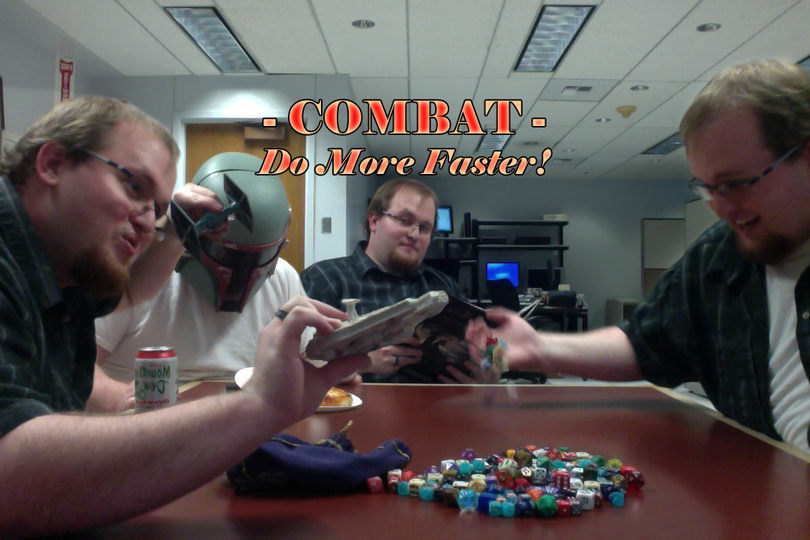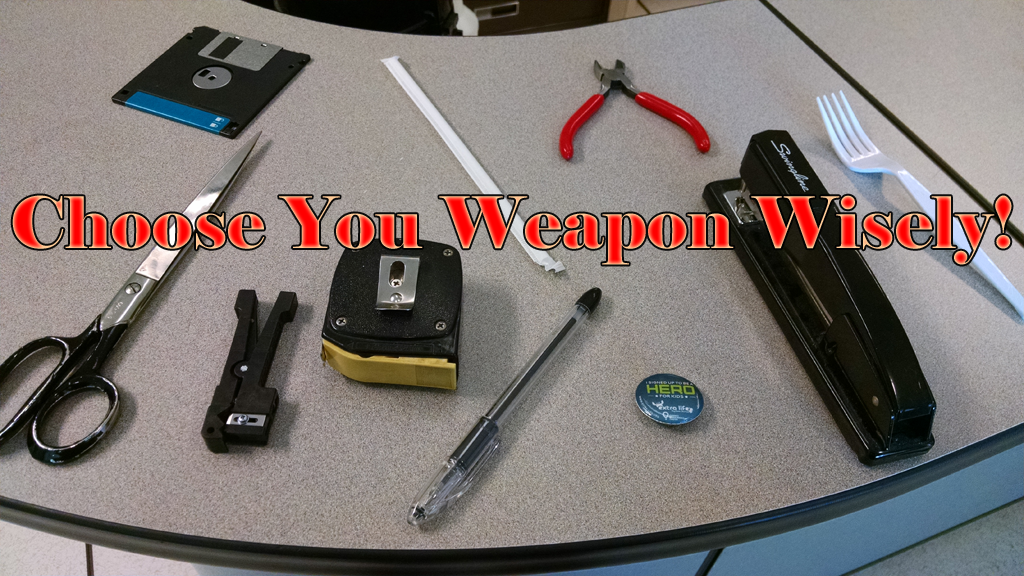Speeding Up Combat - Do More Faster!

Combat is such a pivotal role in tabletop RPGs that games can revolve entirely around it. Combat is easy, it’s exciting and it’s direct conflict (aka “plot”). Rulebooks are generally filled with chapters on combat; meanwhile the actual role-playing aspect takes up a fraction of the space. When thinking of a new character, players (me included) think in terms of “what does my character contribute to combat?” first!

With that in mind the biggest thing that plagues tabletop combat is, ironically, the slow pace. Combat is fast and quick. E.g. in Shadowrun a game “turn” is 3 seconds, in game-time. However, you’ll be lucky is a party of four can finish a turn in 10 minutes or less, in real-time. That’s a huge disparity, here are some tips I have learned throughout the years to speed things up.
To begin, the biggest thing that slows down combat is…QUESTIONS! “What’s going on?” “How do I attack?” “What can I do?” now I am not saying questions are bad. Questions are how people learn how to play. It’s needed especially for new players. However, it is important for both players and DM’s to learn the rules.
By paying attention and asking questions when the event is happening instead of waiting for your turn will also help reduce the confusion. This is good for all kinds of gaming, tabletop RPG, wargaming, etc… When everyone knows what is going on and what to do, you’ll see everything speed up exponentially and people will have more fun.
Still sometimes combat just takes a while, even if everyone knows what to do and is on the ball about their dice rolls. With large groups of players it just takes time. My solution, if reducing party size is not an option, is to use grouped initiative. It goes as follows:
- Have all players roll initiative and have the bad guys (e.g. monsters, NPCs) roll once, using average of all their initiatives.
- The players that roll higher than the monsters go first
- All the monsters go in whatever order they want
- All the players go in whatever order they want
- Repeat steps 2 & 3 until the end of the encounter.
The players may go in whatever order they want, initiative is ignored from here on out. Once a player plays give them a “activated” token. Once all players have gone, they hand their tokens back to the DM and the bad guys go. Repeat.
I like this system as it helps keep everyone interested in the combat. It gives players a tactical discussion period before people act then they go. Then the DM can go in whatever order he/she wants. It keeps the game going and there is much, MUCH less time sitting around waiting for your initiative to come up.
If you think about it, if the DM has all the monsters go at the same time then consequently the players go the rest of the time, so just group them together. Monsters, players, monsters, players, on and on.

of a good position.
You can also make the encounters smaller. Note I did not say easier, I said smaller. The more enemies that are in a fight the longer it will take. If a DM would like to make a fight harder, look to see if you can make the terrain or scenario work against the players.
Goblins can be deadly if the players can’t hurt/reach them, due to cover or being high up. On top of that, it makes the players have to think of strategy instead of just hoping their brawn pull them through.
One idea I use to reduce paperwork and searching through books is “fuzzy” hit points on enemies. In D&D Orks have 1d8(ish) hitpoints (HP). If there’s a mob of the Orks around the players how do you keep the HP separate? For me, I don’t. I only keep track of HP for the important enemies, like super villains or mini-bosses. For most enemies they are alive or dead/wounded.
For basic enemies like these, I have a threshold for the damage dealt to enemy, if the players roll close to or above, I consider the enemy out of the fight. If they roll way under the threshold, I describe it as a glancing blow and make a quick note of which one is wounded. If someone successfully damages the wounded enemy again, I take them out of the fight.
The fuzzy hit points works great for large numbers of “weak” enemies. This system works on larger tougher enemies as well, but needs tweaking. Raise the threshold for armored targets that are difficult to hurt. A tough enemy that shouldn’t die in a single blow can have a couple “fuzzy” HP. Don’t go too crazy with the “fuzzy” HP otherwise, you should just use the normal HP. If the enemy is tougher then you thought maybe adjust the stats or come up with a weakness the players can exploit.
You can also give enemies both small hits and hard hits. So you can bring down the rampaging Ogre with a massive attack or a bunch of smaller attacks. However you want to use it is up to you. I like this system because it reduces paperwork and helps keep the combat and the fun rolling. Though as a DM you do need to understand the monster and be flexible with dice rolls and stats.
Shout out rule of the week! Advantage and disadvantage in D&D Next/5e. Instead of memorizing the pluses and minuses for attacking in different situations, just roll 2d20. If you have the advantage take the highest roll, if you have disadvantage take the lowest roll. Fast and efficient.
If you have your own home brewed combat mechanics, please leave a comment below or on my facebook page! See you for the next blog. In the meantime, have fun adventuring!
“A well fed DM is a happy DM.”
